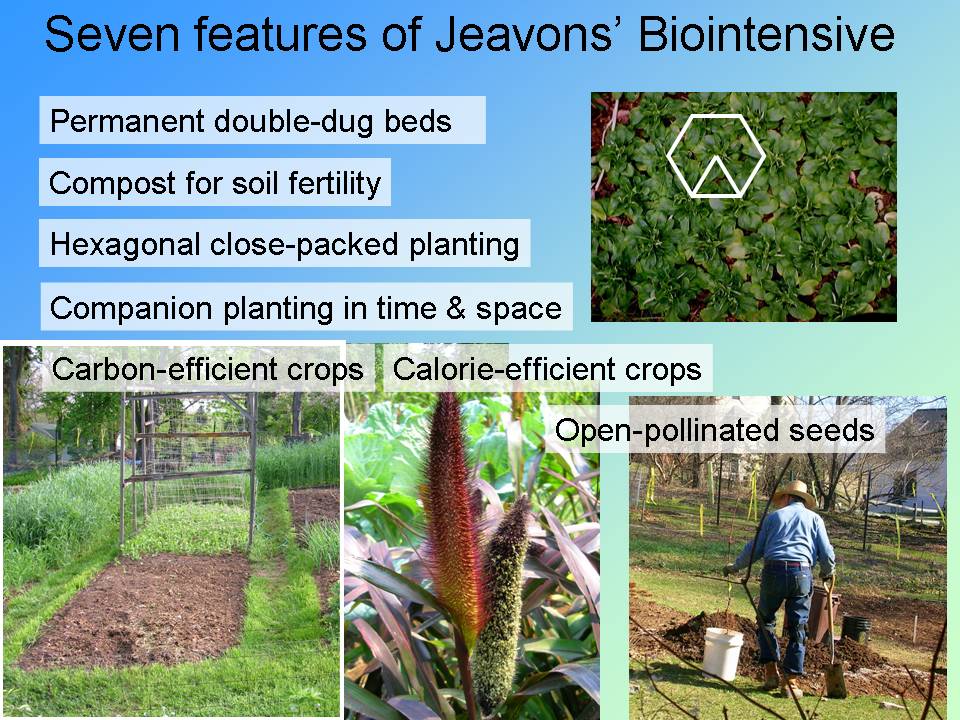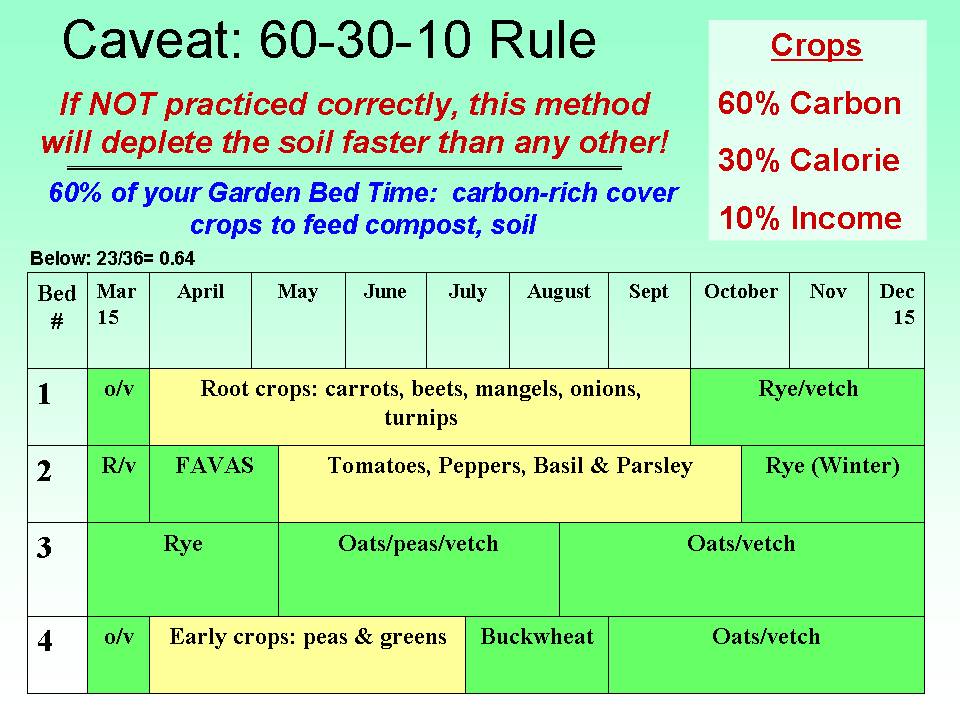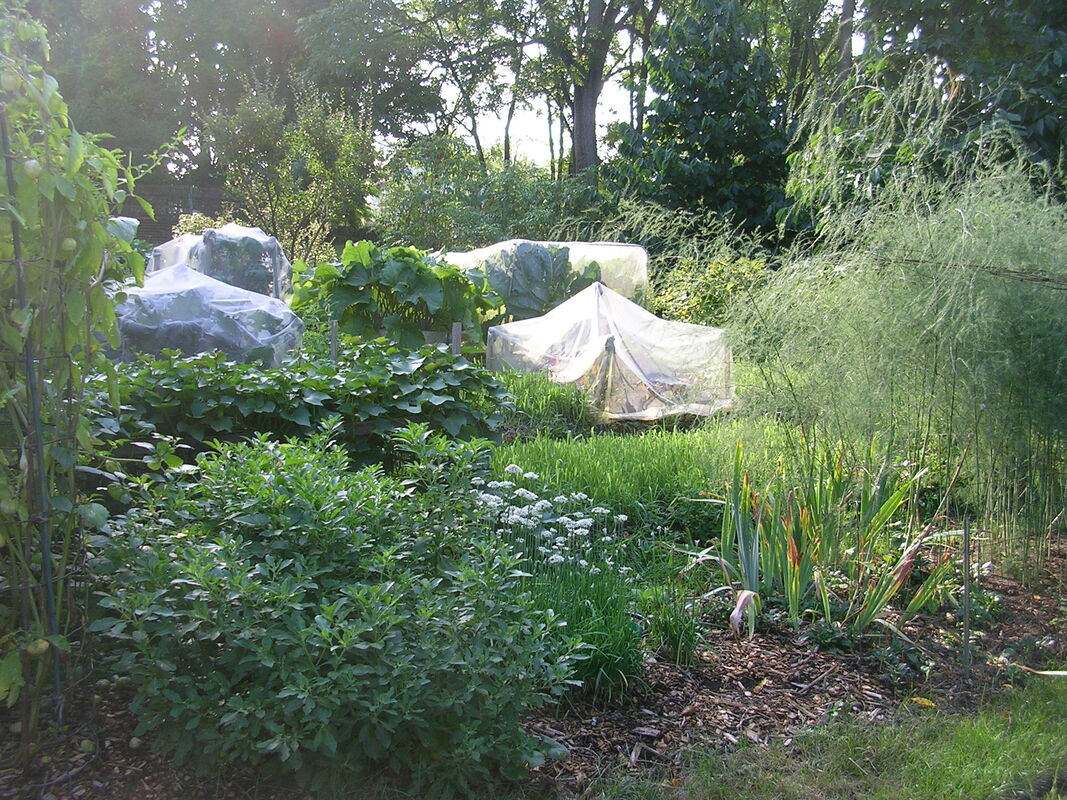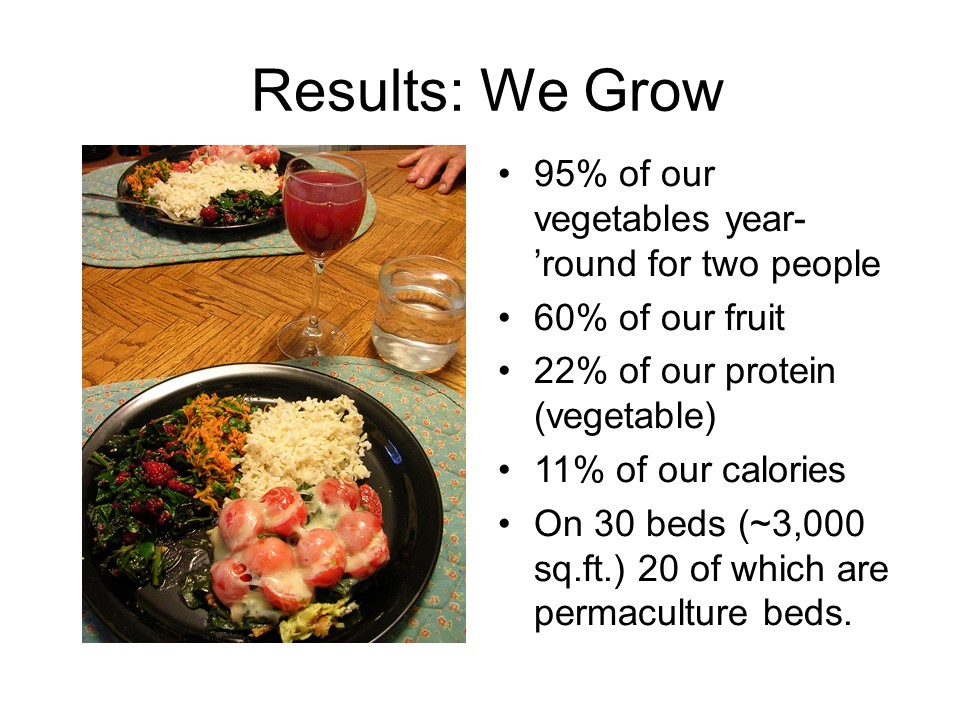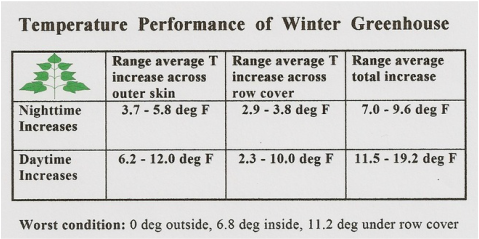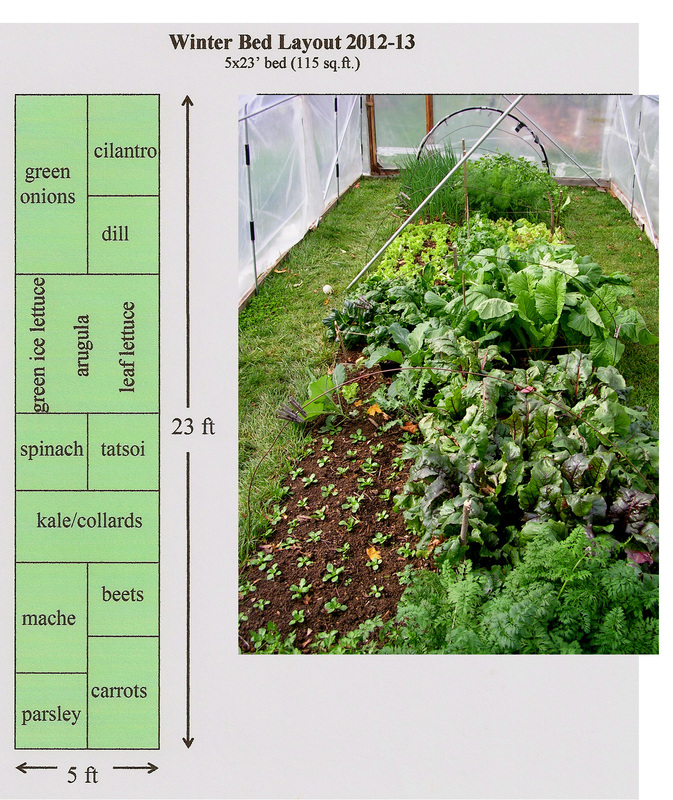Above: View of biointensive mini-farm at Neo-Terra, mid-summer
Grow Biointensive ®
|
In the late winter of 1997 the two of us (Gene and Tania) took the GROW BIOINTENSIVE® workshop at Wilson College in Chambersburg, PA. It was given by John Jeavons of Ecology Action, located in Willits, California. The workshop was organized by Steve and Carol Moore who at the time were in charge of the Sustainability Center at the college. They were accomplished farmers who also ran a Community Supported Agriculture operation.
Having been gardeners for years, we both felt we knew a lot about growing food. We could not have been more wrong. We were blown away by the depth, intricacy and completeness of the school of thought represented by Jeavons. He has summarized this in his book "How to Grow More Vegetables": (short title), which has been published in many languages. (We like the spiral-bound version, which lies flat, and takes a lot of abuse.) We returned, charged with new enthusiasm, and began double digging new beds in the heavy clay and rock of the soil on the flank of Mount Nittany. The school of thought Jeavons practices was previously called biointensive minifarming. Due to inferior imitators, Jeavons later registered the term "GROW BIOINTENSIVE® " to distinguish his school of thought, which has a long tradition, from poachers. We have become practitioners of GROW BIOINTENSIVE® since that time. Matt Drewno, Ecology Action;s manager of Victory Gardens for Peace, has published online the Victory Gardens for Peace Growing Guide, which incorporates the GROW BIOINTENSIVE® principles. From early on we also incorporated elements of Permaculture Design, and Eliot Coleman's winter growing practices. GROW BIOINTENSIVE® presented us with two main challenges: the physical work of digging in heavy clay soil full of limestone, and the intellectual challenge of understanding, and adapting to our own conditions, a school of thought. The intellectual challenge consisted of three hurdles: (1) making and using (good) compost; (2) use of cover crops; and (3) crop rotation. Jeavons has developed an 8-part skills video series explaining elements of GROW BIOINTENSIVE® GROW BIOINTENSIVE® Tutorial
When we presented the results of our efforts at a PASA Conference in 2008 we were in our tenth year. The workshop was so well received we were invited back for the next two conferences. We expanded on this workshop and created our biointensive minifarming tutorial, which you will find in two parts: Biointensive Minifarming PART A, and Biointensive Minifarming PART B. In later years for PASA we organized other workshops, including a day-long workshop on low energy homesteading with two other homesteaders. In our Organic Gardening Primer we present the material using the GROW BIOINTENSIVE® framework as the source of examples.
Right: A fall morning at Neo-Terra Sept. 2020 |
Above: This diagram represents the relative proportions of cover crops and food crops reflecting the 60-30-10 rule Jeavons follows. These proportions allow total self-sufficiency in inputs, as the cover crops provide the organic matter to the soil directly (through roots) and indirectly through composting the tops.
|
Planning for GROW BIOINTENSIVE®
|
To meet the intellectual challenge of GROW BIOINTENSIVE® requires a high degree of systematization, both to keep track of things, and to keep on track. As part of a day-long workshop for PASA in 2013 titled "The Low Energy Homestead," we presented our approaches to Keeping (On) Track: Calendars, Accounts, Performance. We show our overall results in the slide to the right. We keep track of our yields on log sheets, transfer this data to a yield table, and then use a spreadsheet we have constructed to calculate our caloric and protein production. These last three files can be opened for your adaptation.
If you cannot open these three files and would like them sent to you so that you can edit and tailor for your own use, e-mail us at [email protected]. Please let us know which of the documents you would like. Should you find yourself with further questions, feel free to contact us. We love conversations with other gardeners and growers. |
Winter Greenhouse with GROW BIOINTENSIVE ®
|
Eliot Coleman has, to our mind, the best approach for growing food in the winter without added energy. We learned much from his early books, including The New Organic Grower and Four Season Harvest. This second grew out of a self-published spiral bound Winter Harvest Manual which we used to design and build our greenhouse, select winter hardy crops, and care and maintain the interior growing environment. We presented a pictorial summary of our greenhouse at "The Low Energy Homestead" for PASA in 2013.
The picture to the right shows the planting arrangement of our winter crops following GROW BIOINTENSIVE®. We do not supply any additional heat. The table below shows the range of monthly average increases in temperature due to each of the two envelopes -- the outer skin and the row cover -- for maximum and minimum temperatures. |

